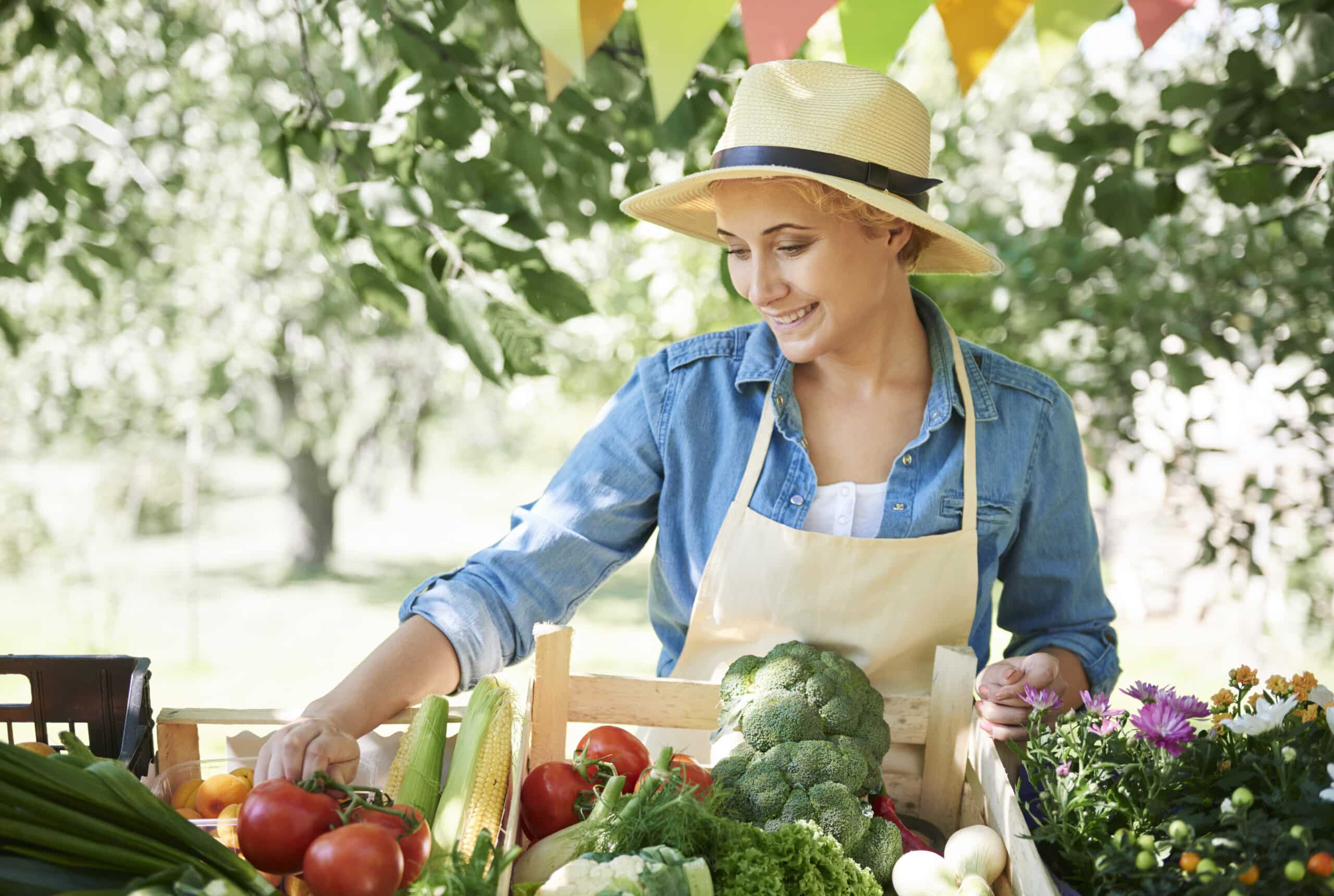
Harvesting Sustainability: Balancing Organic and Local for a Better Tomorrow
When you shop at a grocery store, you probably purchase food products based on price, convenience and taste. With increased social awareness of climate change, you may add “organic” to your grocery list. Demand for food sustainability practices has many consumers buying organic and local foods in larger numbers.
Food sustainability involves much more than just food, however. It includes sustainable farming practices, public health, animal welfare, fair working conditions and community support. Regional and local economies receive support through job opportunities, which build stronger communities.
The USDA’s Local Food Directories page has more than 8,700 registrants, proving the popularity of organic and locally grown produce. But what are the differences between the two food types? What future steps can we take to avoid food waste? Let’s look at local and organic food choices and which sustainable option is right for you.
Benefits and Drawbacks to Locally Grown Food
According to the USDA, local food is the production and marketing of food to consumers within a specific state boundary. Local food systems connect customers with farmers and growers. The “locavore” movement, defined by eating and shopping locally, is sustainable because it shortens the distance between food production and sales.
Two local food forms are farm-to-table and farmers’ markets. These forms benefit farmers, consumers and the environment in the following ways:
- offering fresh products
- reducing production and transportation carbon footprint
- transparency in food origins
- increasing farmers’ profits
- separating from corporate agriculture
- consuming higher quality products
- establishing relationships with growers and farmers
- preserving farmland
- reducing food safety risks
Many communities in the U.S. engage in farm-to-school, farm-to-cafeteria and farm-to-table programs that support both farmers and community members. Another option is farm shares through a community-supported agricultural program (CSA). Consumers buy a share and pay the grower in advance of the season. They receive harvest shares weekly and spend less than at a traditional grocery store.
Purchasing local food does have drawbacks. It can be expensive, although prices reflect what fresh foods are available or in season. Additionally, some local food is not certified organic as certification is expensive. However, even non-organic local foods are often healthier and more sustainable than processed produce.
Pros and Cons of Organic Food
Organic food products are grown via eco-friendly means. Organic farming’s biological and mechanical processes promote healthy ecosystems and biodiversity. Genetic engineering (GMO), sludge, sewage and fertilizers are prohibited in organic food production. Livestock raised for meat, dairy and egg production live in free-range environments without animal by-products, growth hormones or antibiotics.
A common marker of organic food is a USDA label indicating the product meets the rules for sustainable organic farming: promoting land conservation and reducing greenhouse gas emissions. Lengthier crop rotations and lower pesticide use improve biodiversity. Better quality soil means less land degradation, limiting the amount of carbon released into the air.
Other benefits of organic food production include better food quality and security in local communities as organic foods have lower chemical pesticides, cadmium and nitrate levels than commercial produce. Also, organic consumers eat more whole foods, leading to healthier lifestyles.
Concerns about organic foods often originate in consumers misunderstanding the definition of “organic”. Organic is not pesticide-free; these farms use naturally derived forms instead of chemical pesticides. Those pesticides are less toxic, but can still pose significant human health risks.
Organic foods are almost 40% more expensive than commercially produced products, making purchasing difficult for lower-income communities. Increased physical labor needed in organic farming and produce’s short shelf-life also contributes to price. Additionally, weeding and hand-spreading of natural fertilizers add to the time and cost of labor and production.
Please note, costs for organic produce can be mitigated by following EWG’s “Dirty Dozen™” and “Clean 15™” lists. These lists were created to help people reduce their exposure to harmful pesticides.
Future Sustainable Waste Management Practices
Nearly one-third of global greenhouse gas emissions come from food production, distribution and consumption. In the United States alone, 38% of all food is wasted and thrown in landfills, sewers or incinerators. Sustainable waste management practices for food are critical to solving food insecurity and slowing the climate crisis.
Sustainable waste management keeps food products in use longer and limits the waste dumped in sewers and landfills. Current practices to limit food waste include reducing waste amounts, recycling and reusing products, as well as energy recovery.
Continually educating the public and encouraging them to buy local and organic are two current practices with positive results. Consumers are encouraged to shop for fresh produce harvested when ripe rather than artificially forced to maturity. Future steps include changing how manufacturers label food expiration dates and requiring companies to use environmentally friendly disposal means.
There needs to be more effective means for citizens to take ownership of their food waste sustainability. Recently, the U.K. government scrapped its proposed “7 Bins” approach, which required residents and their local councils to separate recycling into seven bins, one for each type of product. Not surprisingly, this proposal was met with public backlash.
The “7 Bins” approach is now in limbo, proving efficient waste management needs to start from the top down. However, a savvier approach to innovative storage and waste containers, including easy collection and transport, may solve some of these issues.
Inventory Efficiency and Agricultural Technologies
One method manufacturers can use to limit food waste is inflow inventory, which means finding solutions to reducing excess safety stock. Excess products lead to substantial food waste and lost revenue. Product waste and plastics end up in landfills, emitting chemicals and gasses into the soil, air and water supply.
Food manufacturers can use new automation technologies like AI and IoT to create demand plans which accurately provide data by calculating the product turnover ratio. Waste management software programs ensure safety stock remains at appropriate levels. Biodigesters report data on food waste processed hourly, including the amount of carbon prevented from landfills.
In the fields, smart technology also impacts inflow inventory. Robotic planters, autonomous tractors and drones conserve energy, while addressing future driver shortages. Powered by the IoT, precision agriculture allows farmers to determine the best crop results without using energy resources.
Fair Practices and Food Production
A significant farming concern is the exploitation of migrant workers, from housing conditions to low pay to dangerous working environments. Undocumented workers on some farms likely suffer from these conditions. High injury rates and food insecurity paint a grim picture for migrant workers in the food industry.
As the move to organic products continues, the plight of the migrant workers needs to be part of the conversation. More organic certification programs should include farmworker rights to earn organic status. Fair Food Program and Fair Trade certifications work for better wages and living conditions for laborers.
Eating Sustainably on a Budget
Whether you eat local or organic food, you can do so while staying on a budget. Buying directly from farmers and purchasing in-season produce saves consumers money. Shopping for store-brand organic products, using coupons and buying sale items are simple steps to eat healthier without spending much.
Eating organic or local foods is healthier for your well-being and the environment. Avoid products with plastic wrap or pre-packaged foods that expose you to harmful chemicals and contribute to destroying our planet. Eating green, regardless of method, is better for you, your family and the world.



Post a comment